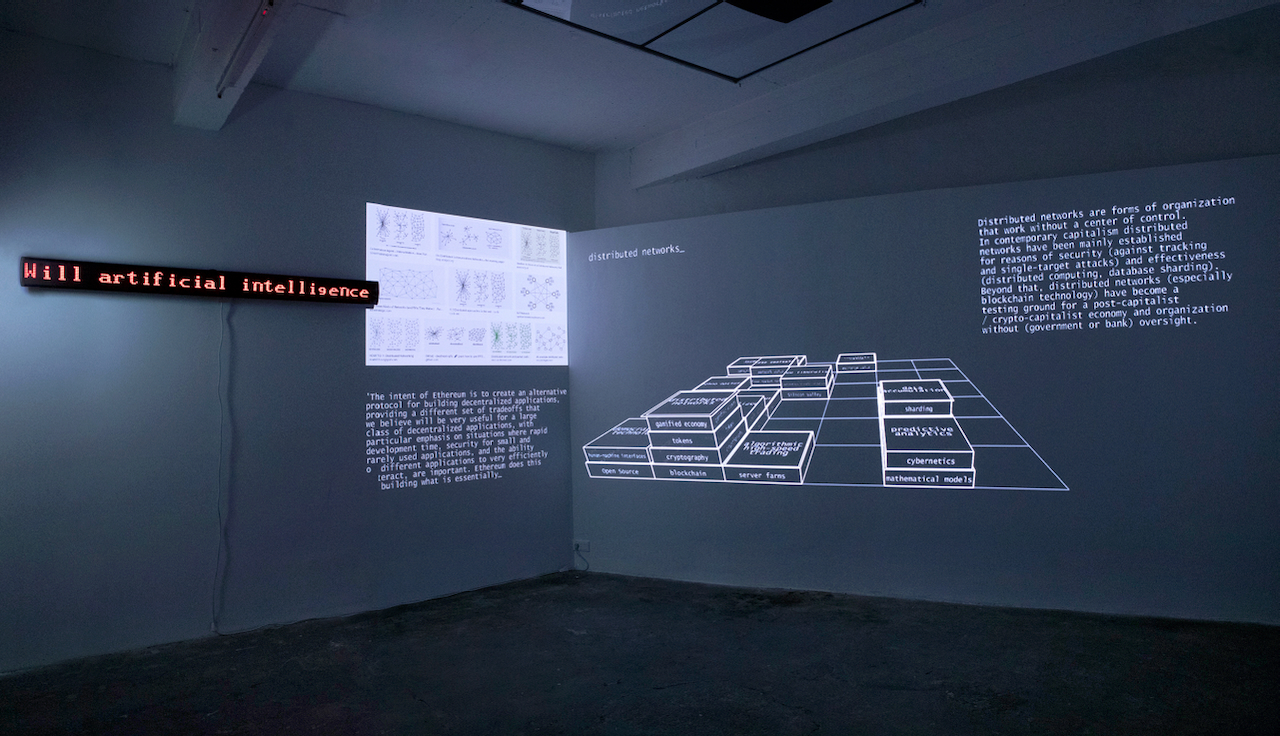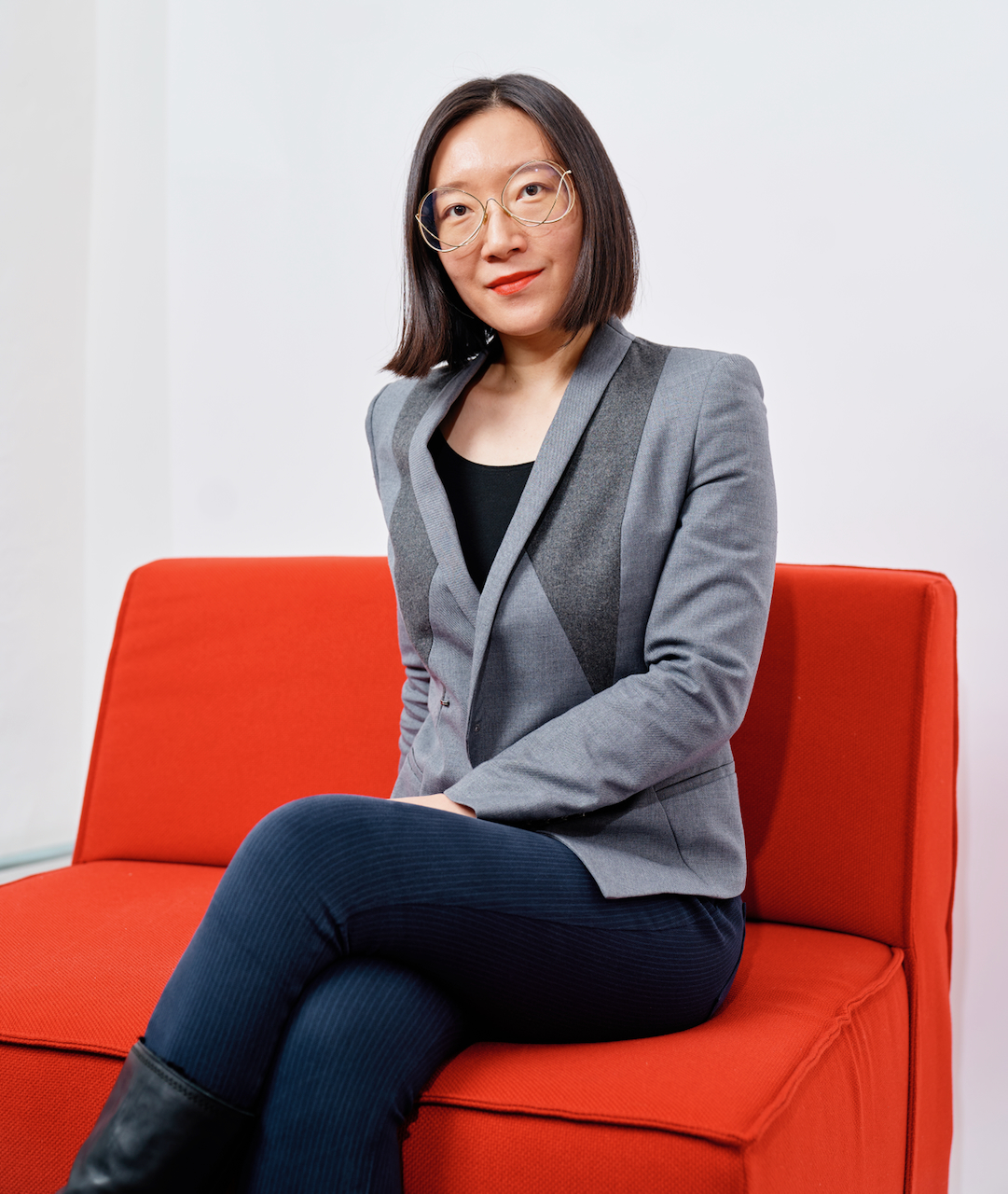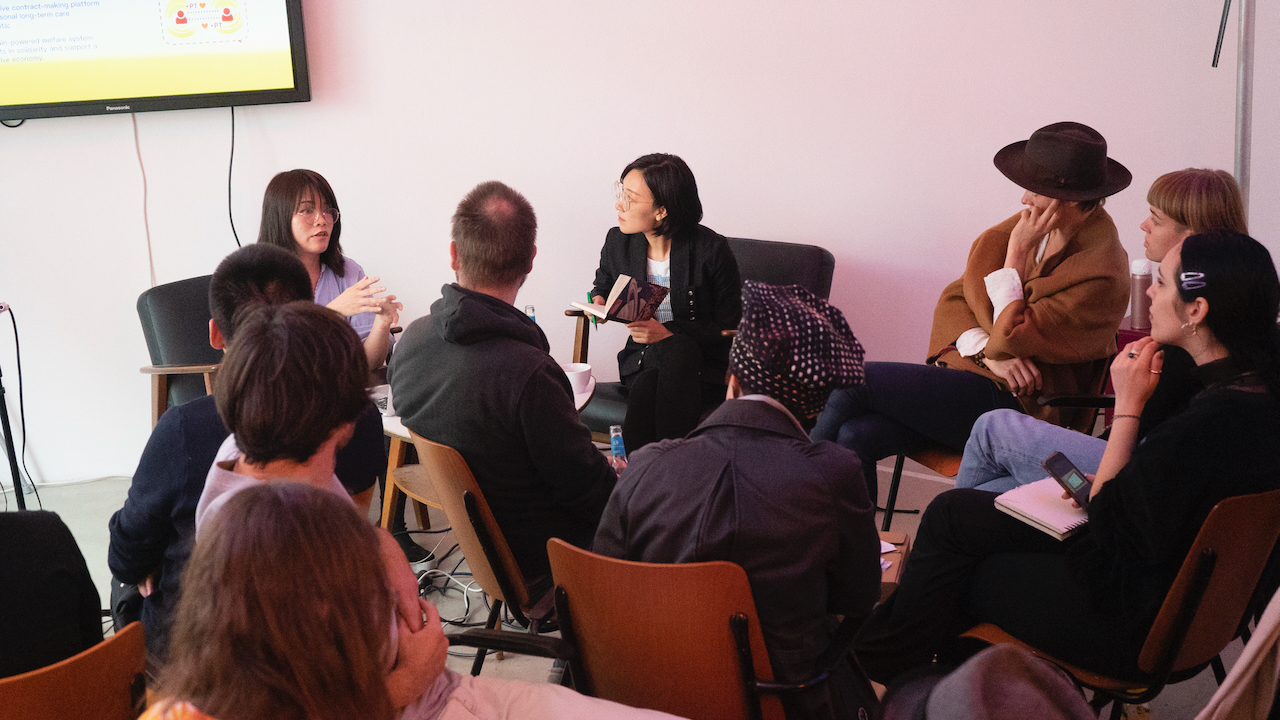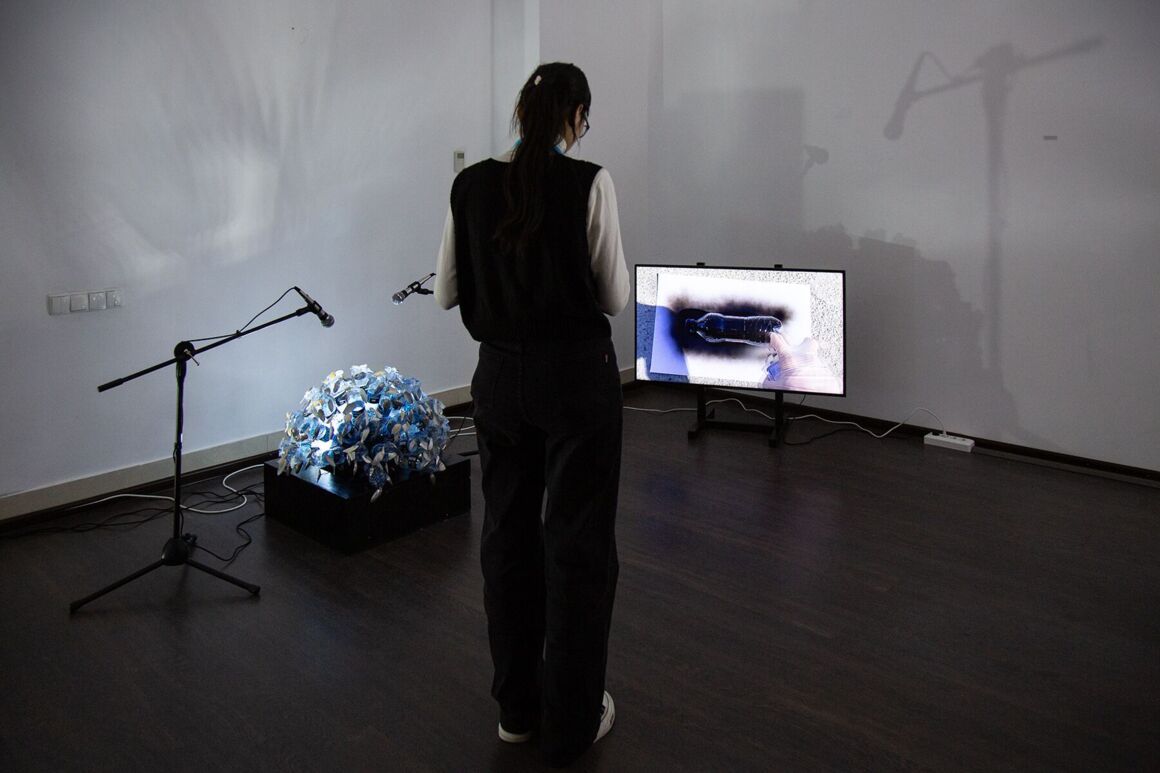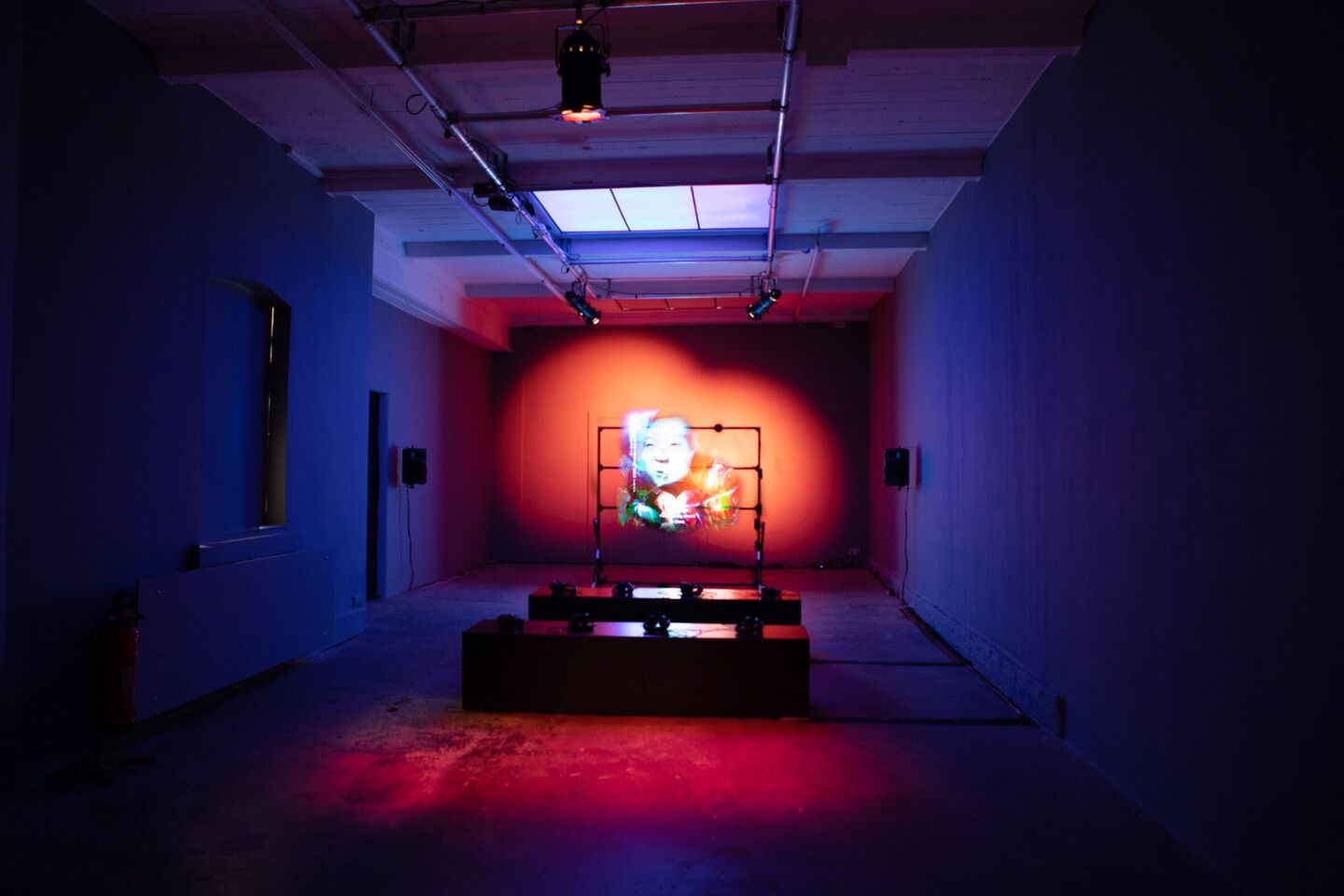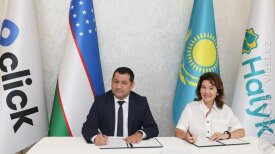In the second half of June, the YEMAA Center for Contemporary Culture in Atyrau held an online school for young curators: ‘Curator in the Face of Crisis’. The school also included a series of lectures by Mi You, professor of art and economics at the University of Kassel and curator at the documenta-institut, on ways to organize curatorial projects.
Vlast reached her to talk about changes in curation against the backdrop of geopolitical conflicts, how approaches to curation differ across the world, about the strategies that Kazakhstan-based curators can implement, and how the YEMAA project helps to learn this business in the absence of local educational programs and infrastructure.
Mi You is a researcher and curator based in Germany who studies the relationship between Europe and Asia in the art world. Her academic interests are in new and historical materialism, performance philosophy, as well as the history, political theory, and philosophy of Eurasia.
Can you define the role of the curator amid today’s overlapping crises, from political to ecological?
The role of the curator goes beyond the confines of contemporary art. It sits in a wider societal context. You could say it's quite exceptional that in the West, say basically Europe and North America, in the last 30-40 years curators have become increasingly professionalized. This is exceptional. For curators from other contexts, where you don't have this number of big institutions, and public-private institutions with a well-oiled funding system, reality can be quite different. Which is not to say that it's not worth establishing institutions in the image of Europe and North America. But I believe it’s also worth establishing the role of the curator as a crucial actor, more so than the current model in the West.
The social dimension is crucial. I think curators who are outside of Europe and North America must be more aware of the social and political conditions, which also limits their work. Curators in the west take this for granted. And they live in some kind of illusion of artistic freedom, which is probably also an exceptional, rather than a universal condition.
And this is what we try to do in our curatorial course. My listeners learn about the role and the development of curating in Western institutions. But they should also develop their own understanding. And that can start by having a very grounded understanding of social developments, ongoing political and economical processes. This more grounded understanding is the basis to find your own curatorial strategy.
This is why what works in the West may not work in the context of Kazakhstan or elsewhere, and vice versa. I really try to encourage them to start with real questions, with real issues, and to find their own way. It doesn't have to look like contemporary art in western institutions.
It seems that curatorial practices appeared in the aftermath of World War II as a solution to rearrange its ruins. I'm referencing to this common experience of curators that were included in the book of interviews by Hans Ulrich Obrist. The common thread was that the task of curators is to understand the context and organize objects around it. After years, it looks like curators have become more like researchers, giving a voice to public discourse. How do you see the curatorial practices changing in times of crisis?
It's nice of you to mention Obrist, I was just with him 10 days ago in Venice. He symbolizes a time of globalization where, as a research-minded creator, you can go everywhere, understand the local problem, and then act on it. We are now experiencing that the golden time of globalization is strained and dissolving. I work also at the Documenta Institute which is one of these Post War-era projects that seem to have peaked at the time of globalization.
Yet, I'm not saying that you should only have local curators working on local issues. I think having an international, comparative, and empathetic understanding for each other is still very important. But the strategies and tactics can of course be different.
Art and civil society in the West is kind of a given. Right now in the West you actually have a conflict between civil society and the state, which means art loses power.
These landmark geopolitical shifts are influencing art space more than ever. There was a lot of talk around the conflict between China and the US before the COVID-19 pandemic. What changes did it bring to the global curatorial spaces? Is there a renewed distinction between Eastern and Western curatorial contexts?
I try not to generalize too much, but there is some truth that the world is becoming multipolar, and that includes the art world. There is currently still one layer of art professionals – I think Obrist is one of its prominent representatives – who can still travel and can show their work in the US as well as in China. But that's only a particular layer.
There are deeper layers that do not necessarily surface. The west has a certain projection of the non-west, and therefore all they want to see is what they already know about the non-west. That is essentially what they want to be, but they're not, and what they think the Global South or the non-west should be.
This creates certain problems, of which I've written quite extensively about. I also have a book called 'Art in the Multipolar World' that is coming out in English, which is all about this mutual projection, and how we actually need to overcome this practice of reaching for the low-hanging fruit. This way we're basically reinforcing biases that we have for each other instead of getting to the root of our own problems or to the root problems of the others.
What I plead for is for people in each cultural context, as well as for those who travel and bring ideas back and forth, to aim for difficult questions, not the most obvious ones.
This question is very important for Kazakhstan’s contemporary art, because it appeared at that very “nomadic” moment in world art, which Nicolas Bourriaud captured in his essay on the Altermodern. It is becoming increasingly difficult to think of space availability as a universal good. Maybe this is a new challenge for the curator: To fight for the unity and solidarity in the world among different societies in the face of large political splits?
This is a very philosophical discussion, it depends on how we define universality. I think we think of it as something common, but not necessarily the smallest common denominator, like 'we share the same planet, so we have to care for it together'. This is true, but international politics pays too much of a lip service to such a common denominator. We have a multipolar world, so we need to come up with some better concepts that can bind us together, providing international platforms or institutions that are able to act in certain circumstances. This may sound all very abstract and lofty, but I actually unravel it in my book. It’s my wish for the art world to reckon with deep structures and to start thinking about what kind of institutions we can design and build in the current hostile environment.
It seems quite problematic to focus on issues such as climate change, the reactionary backlash, or the ruthless exploitation of labor within non-western contexts. The world has become more disintegrated and closed off, and there are fewer possibilities to become full citizens of the western art community. It’s not so obvious to find a way to question all these things as a local curator or an artist in a highly censored environment.
This question may never be resolved, and we have to maybe come up with different strategies at different times. So, I'll start with something rather obvious: You know the limitations, and it's not because of the limitations that you don't engage, it is not because you know a country is currently not democratic enough that you give up on it. This way you just deny any possibility of doing anything, for art to be a transformative force in society, for society to become better.
Recently, a colleague of mine, German curator Ute Meta Bauer, was invited to curate the Diriyah Biennale in Saudi Arabia. She created a beautiful festival which was about the environment. And then she was interviewed by a popular German newspaper. The headline was something like: 'You cannot show nudity in Saudi Arabia'. It was a cheap blow. Saudi Arabia is actually becoming more liberal despite its problems and limitations. And this is all the press can say about one of the best international curators from your country curating this Biennale in another quite complicated country? This means that you really have a problem. If the only way you look at the rest of the world is through your very impeccable moral standards, then you need to fix your moral issues first. I find this almost trivial and very telling of how the mainstream in Europe behaves right now.
For me, engagement to the context is the most crucial aspect of the work. You always have to engage. You need to make sure that you are not prematurely compromised. Which is to say you know there are red lines and that you don't touch the red lines, but then as you get closer to it, as you know the context better, you actually know that our red lines are quite flexible sometimes. For example, censorship exists in China, of course, but you can actually talk to the people who make these decisions, and then you actually realize that your counterpart is not an evil person. You can engage in quite meaningful conversations with them. There you have a sort of dialectic relation. I think that only through engagement you can make sure that there is more elasticity, more acceptance and more space for action.
In Kazakhstan it's very interesting from what I've seen: There is an older generation, like the Actionist kind of political art and activism, but also a younger generation. I find it really courageous, and I am glad that there are platforms where their works are being showcased. This also happens outside the country, and art becomes a sort of archive of the traces of how the society evolves.
But why are we lacking such permanent platforms for curators here? They always pop up for a short period.
I think there are some structural factors. You don't have a big infrastructure, either public or private, to support art and culture. Again, proportionally saying, in Europe there's too much of it. There are 20 museums in the German city of Kassel, which is quite small. Without infrastructure and without public funding, private donors, NGO money, and foreign institutions it's too difficult to operate.
I worked, for example, in Indonesia where there was very little public money in the beginning too. So, what do you do? You go to the foreign NGOs and development aid agencies. You discuss with them over a 20-year timeline, you look at their intentions, their plans to boost a sense of community and participation, and then you have a very particular kind of art that is produced by that kind of funding. Is it a good thing? I don't know. I try not to give a judgment. But it's also interesting to see that after 25 years the national government in Indonesia is now stepping in. And the government supports art which is largely not critical. So, there are tradeoffs.
We must understand that the infrastructural conditions are important. Right now it seems to be an interesting time, because you have YEMAA; you have Tselinny, with whom I work; and the Almaty Museum of Art, which I also know quite well.
Right now it feels like there is a really energetic environment, in which you can develop in many different ways, you can have proper museology, archival work, and interpretations of the 1990s-2000s, and a reinterpretation of the socialist period.
YEMAA’s initiative is really important because they are working outside the country’s core (Almaty or Astana) where most of the art activities take place. Given that the project is temporary, what was your aim? Did you just want to create a space for interaction of participants from several parts of the country, or is there something more?
One of the reasons I was drawn to this course was precisely because YEMAA is outside the artistic core of the country.
I get asked similar questions when I'm working in China or in Germany. Even in Germany I worked in small cities, including during my 100-day work at Documenta in Kassel. Except for the Shanghai Biennale, the same was in China. There are so many kinds of artists and professionals: some come from small cities with no representation, while some others are showcased at big international museum shows like Art Basel. It’s almost as if there were parallel realities. And the question is how do you bring them together, and make sure that they can learn from each other.
I think YEMAA managed to do it by pulling in quite a diverse group of aspiring curators. It's good that not all of them are coming from a curating background. There's someone who is a journalist, or music producer, or even a school teacher. The school teacher actually comes from Western Kazakhstan and has a project aimed at children.
The crucial thing is that there should be no hierarchy in saying whose knowledge or whose art is worthier. Knowledge and art should not be put in a rank, we should rather make different access to knowledge equally valid. Of course, a person who lives by a river which then flows into the Caspian Sea has knowledge that people elsewhere do not have. One local artist mentioned that the language that people speak there was more poetic and fluid, having the quality of a river. And when she comes to Almaty, she feels that people are very proper because there are mountains and very stable forms of existence, in a metaphysical sense. This very beautiful, and such things you can only get if you are speaking and thinking with someone from there, and letting that local expression come to form.
And how did you arrange this course? Did you mix up some hard skills with humanities or did you rather focus on something specific?
We had some clusters of topics, such as a very quick walk-through of the history of curating and infrastructural conditions for western and non-western contexts. And then we had something around collective processes and curating social relations, or curating as a form of activism. And then we talked about working with non-art actors, as well as what it means to work with power or private capital. A lot of the course was actually more about the participants’ concerns and issues, and how they stumbled in the work, and how we can address that.
How can such a small-scale, yet significant project affect the art environment in the near future? It seems that the task of the project wasn't to create a system of production and reproduction of curators, but rather making local art actors more cooperative.
Yes, this is a very good way of putting it. I think the self understanding of the curators is more of a catalyst. While your things are already there, the chemical process is not happening yet. But, if you go in, and you weave certain narratives together, all of a sudden people see a different problem or look at a question differently. People discover something in each other that they have not discovered before.
Creators can become this catalyst, and they can do this ideally wherever they are. Again, this teacher from Western Kazakhstan, I think she can very well bring this curatorial thinking into her daily job. And her students will capture something. You don't have to call it art, and of course it will be good for people in the art world to also see this and recognize this. These kinds of projects can be done in other ways in other places. It's good that these projects are popping up here and there and that over time you contribute to a very beautiful picture of a caring society.
Поддержите журналистику, которой доверяют.
